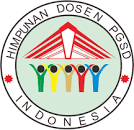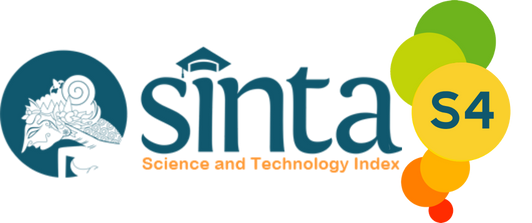Representasi Digital dan Pendalaman Konsep Matematis dalam Pembelajaran Matematika SD: Studi Kualitatif di Tiga Sekolah Dasar di Jawa Barat
Abstract
This study explores how digital representations are used in elementary mathematics instruction and examines their role in supporting deep learning. Despite the growing presence of technology in schools, many teachers still struggle to help students understand abstract concepts like fractions and geometry. Using a qualitative method, data were gathered through classroom observations, interviews with nine teachers of Grades IV–VI, and analysis of teaching materials from three elementary schools in urban and rural settings. The findings show that teachers used various digital tools such as simulations, educational videos, and learning apps to help students grasp abstract concepts like fractions and geometry. Some teachers created their own digital resources due to limited access to online platforms. Students generally responded with increased interest and better understanding. However, challenges remain, including limited infrastructure, lack of preparation time, and varying levels of digital literacy among teachers. While digital tools are present, their use often falls short of promoting deep learning, which involves critical thinking and reflective exploration. The study suggests that ongoing teacher training and improved access to digital infrastructure are essential to maximize the educational benefits of digital media in elementary mathematics
Keywords
Full Text:
PDFReferences
Ainsworth, S. (2016). A conceptual framework for considering learning with multiple representations. Learning and Instruction, 16(3), 183–198. https://doi.org/10.1016/j.learninstruc.2006.03.001
Annetta, L. A., Newton, M. H., Franco, Y., Johnson, A., & Bressler, D. (2024). Examining reading proficiency and science learning using mixed reality in elementary school science. Computers & Education: X Reality, 5, 100086. https://doi.org/10.1016/j.cexr.2024.100086
Bragg, L. A., & Nicol, C. (2018). Visualising fractions with young learners: Evidence from digital tools. Mathematics Education Research Journal, 30(2), 125–143. https://doi.org/10.1007/s13394-017-0214-y
Castro-Alonso, J. C., & Ayres, P. (2021). Learning from static and dynamic visualizations: A systematic review of the literature. Educational Psychology Review, 33(4), 1225–1252. https://doi.org/10.1007/s10648-021-09602-9
Creswell, J. W., & Creswell, J. D. (2018). Research Design: Qualitative, Quantitative, and Mixed Methods Approaches.
Creswell, J. W., & Poth, C. N. (2018). Qualitative Inquiry and Research Design: Choosing Among Five Approaches (4th ed.). SAGE Publications.
Jansen, M., & Spitzer, M. (2020). Training deep understanding in elementary mathematics classrooms: A design-based research. ZDM–Mathematics Education, 52(4), 609–622. https://doi.org/10.1007/s11858-020-01150-5
Kaltiparmak, K. (2024). Concrete Manipulatives in Primary School Mathematics Education. In Researches and Evaluations in the Field of Educational Sciences (pp. 127–129). Gece Kitaplığı. https://www.gecekitapligi.com/Webkontrol/uploads/Fck/Educational_ar24_v4.pdf#page=127
Kurniawan, M. R. (2020). PENGEMBANGAN VIDEO TUTORIAL PRODUKSI ANIMASI PEMBELAJARAN SEKOLAH DASAR MENGGUNAKAN MICROSOFT POWER POINT. Jurnal Pedagogik Pendidikan Dasar, 7(1), 24–34. https://doi.org/10.17509/jppd.v7i1.30057
Maxwell, J. A. (2013). Qualitative Research Design: An Interactive Approach (3rd ed.). SAGE Publications.
Mayer, R. E. (2007). Multimedia Learning (2nd ed.). Cambridge University Press.
Mayer, R. E. (2021). Multimedia Learning (3rd ed.). Cambridge University Press. https://www.cambridge.org/core/books/multimedia-learning/9F6A38E2174F7A3AB29BC3DBFAD649C1
Miles, M. B., & Huberman, A. M. (1994). Qualitative Data Analysis: An Expanded Sourcebook (2nd ed.). SAGE Publications.
Moreno, R., & Mayer, R. (2007). Interactive Multimodal Learning Environments: Special Issue on Interactive Learning Environments: Contemporary Issues and Trends. Educational Psychology Review, 19(3), 309–326. https://doi.org/10.1007/s10648-007-9047-2
Nowell, L. S., Norris, J. M., White, D. E., & Moules, N. J. (2017). Thematic Analysis: Striving to Meet the Trustworthiness Criteria. International Journal of Qualitative Methods, 16(1), 1609406917733847. https://doi.org/10.1177/1609406917733847
OECD. (2021). 21st-Century Readers: Developing Literacy Skills in a Digital World. OECD. https://doi.org/10.1787/a83d84cb-en
Papadopoulos, I., & Makri, K. (2021). Designing for learning with immersive digital environments in mathematics education. British Journal of Educational Technology, 52(2), 613–628. https://doi.org/10.1111/bjet.13023
Patton, M. Q. (2015). Qualitative Research & Evaluation Methods (4th ed.). SAGE Publications.
Piaget, J. (1973). To Understand is to Invent: The Future of Education. Grossman Publishers.
Rodiyana, R., Puspitasari, W. D., & Yanto, A. (2022). Media Flashcard untuk Optimalisasi Hasil Belajar Siswa di Sekolah Dasar. Jurnal Pedagogik Pendidikan Dasar, 9(1), 23–30. https://doi.org/10.17509/jppd.v9i1.46755
Sandelowski, M. (2000). Whatever happened to qualitative description? Research in Nursing & Health, 23(4), 334–340. https://doi.org/10.1002/1098-240X(200008)23:4<334::AID-NUR9>3.0.CO;2-G
Sedig, K., Gashlick, D., & Liang, H. N. (2016). Exploring the role of interactive visualizations in elementary mathematics education. Education and Information Technologies, 21, 1227–1249. https://doi.org/10.1007/s10639-014-9370-5
Setiyani, V. D., & Harmianto, S. (2022). Analisis Kemampuan Guru dalam Membuat dan Memanfaatkan Media Pembelajaran. Jurnal Pedagogik Pendidikan Dasar, 9(1), 47–56. https://doi.org/10.17509/jppd.v9i2.50514
Yin, R. K. (2018). Case Study Research and Applications: Design and Methods (6th ed.). SAGE Publications.
Zhang, J., Liu, Y., & Wang, H. (2020). Deep learning in education: A literature review and classification. International Journal of Emerging Technologies in Learning, 15(10), 89–102. https://doi.org/10.3991/ijet.v15i10.13313
DOI: https://doi.org/10.17509/jppd.v12i1.84895
Refbacks
- There are currently no refbacks.
Copyright (c) 2025 Jurnal Pedagogik Pendidikan Dasar

This work is licensed under a Creative Commons Attribution-ShareAlike 4.0 International License.
indexed By :

_page-0001-min.jpg)






.png)

